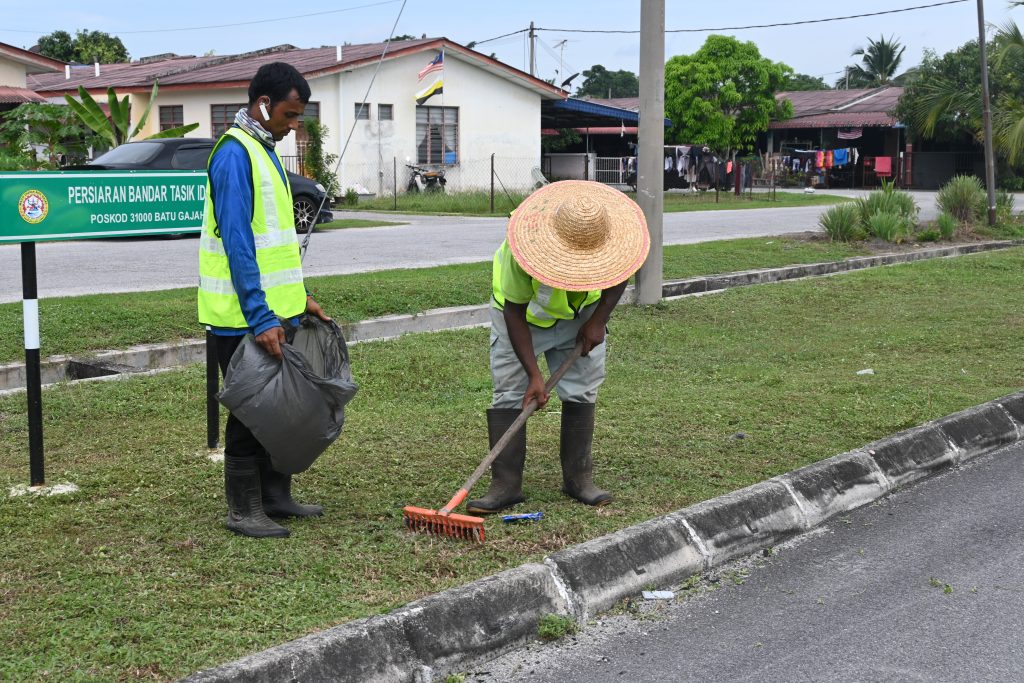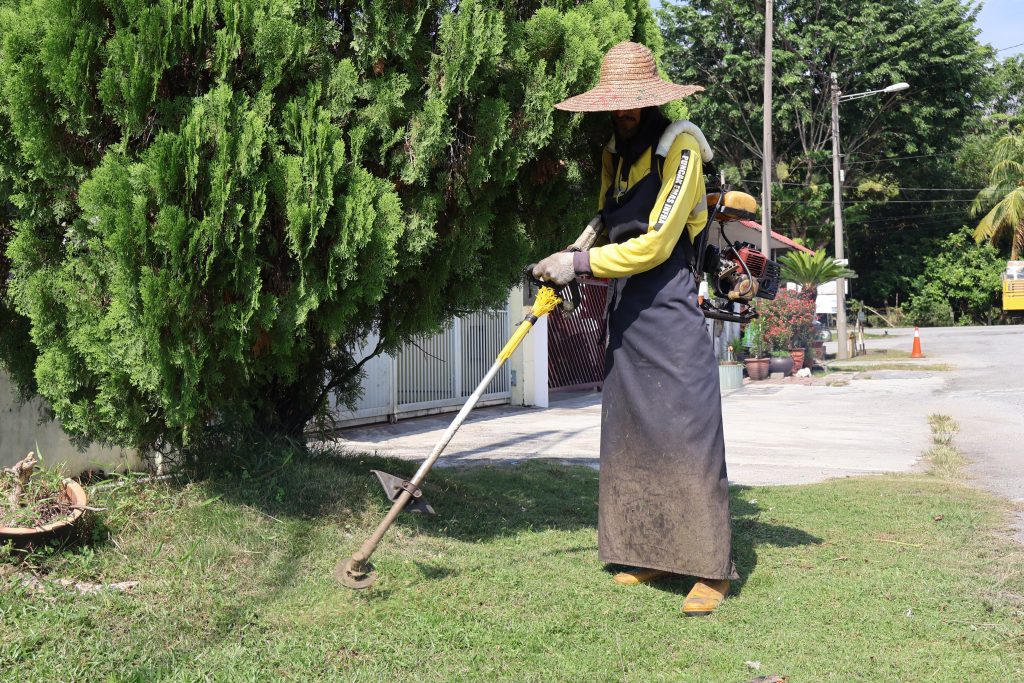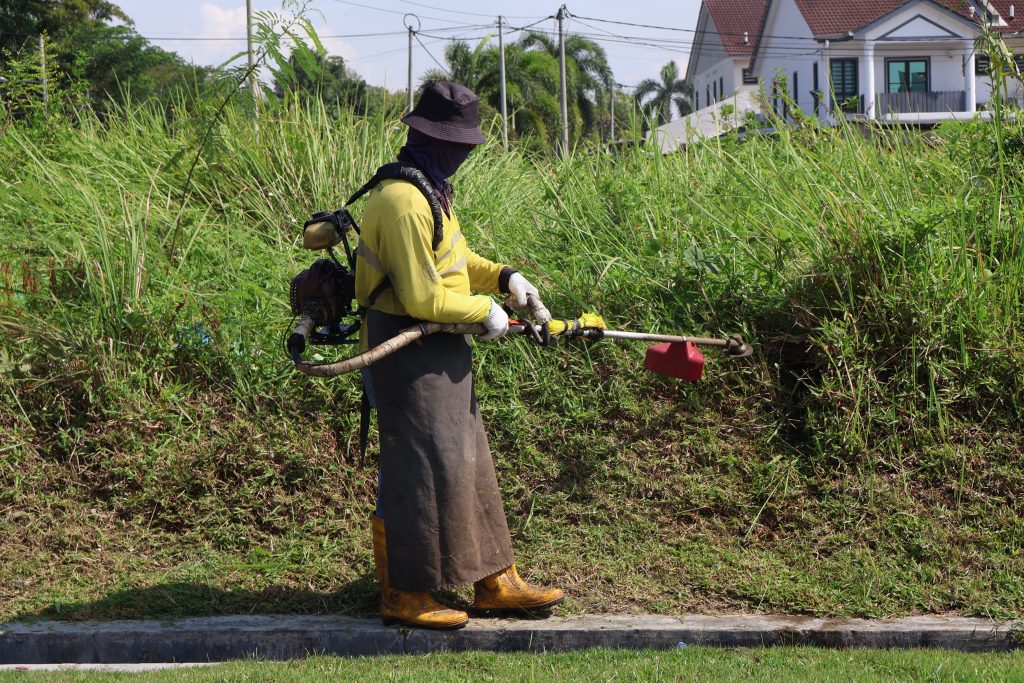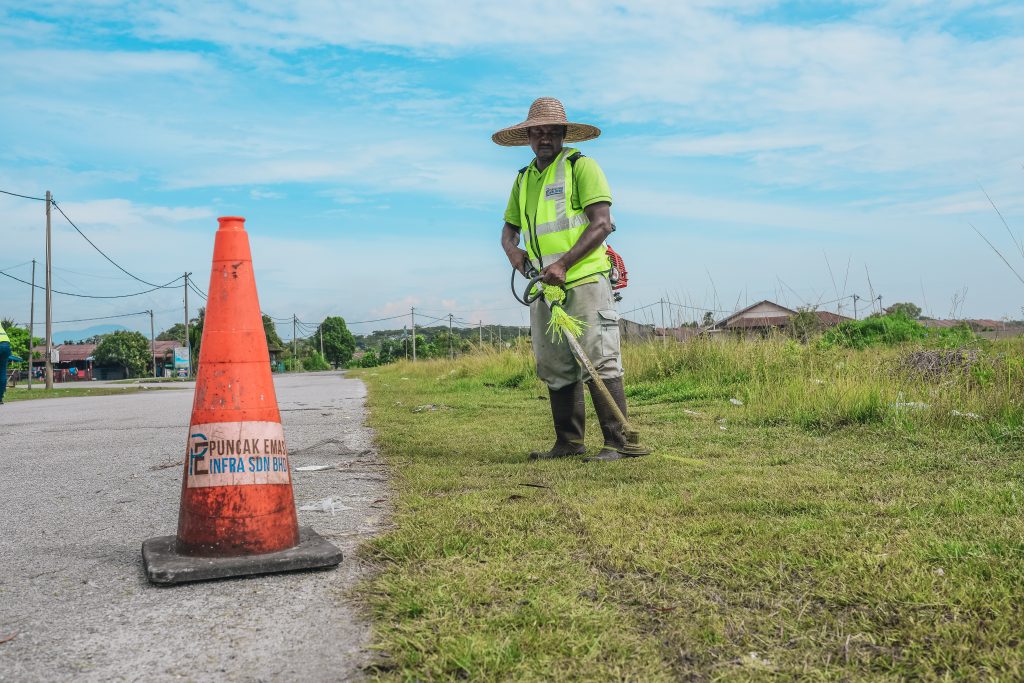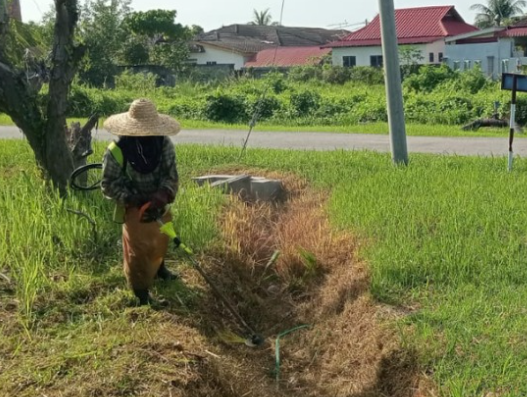RO3 – Grass Cutting
• Grass shall be cut to a maximum height of 25mm from ground level, and all grass clippings must be swept and disposed of immediately at designated locations.
• Maintenance includes all types of grass, shrubs, and wild plants found along road shoulders, road reserves, medians, roundabouts, pedestrian walkways, concrete posts, paved areas, back lanes, and side lanes.
• Devegetation works involve the removal of grass and soil growth on paved road surfaces.
• Grass cutting on slopes (cut or embankment slopes) shall be limited to 1 meter, including 1 meter on both sides of berm drains up to the second berm.
• Grass growing on pedestrian walkways, road edges, scupper holes, concrete posts, and fences shall be cleared or treated with environmentally friendly herbicides. The use of herbicides in areas where grass cutting is difficult must first receive approval from the Supervising Officer.
• Grass cutting shall be carried out up to the drains, and where it meets property boundaries, cutting shall extend up to the property boundary, including access lanes between building blocks. If there is no drain, cutting shall extend up to the property boundary beyond the paved road.
• Where grass cutting meets open areas, maintenance is limited to 1 meter beyond the drain. If no drain exists, cutting shall extend up to 1 meter beyond the paved road into the open area.
• Where grass cutting meets individual land lots, maintenance is limited to 1 meter beyond the drain. If no drain exists, cutting shall extend up to 1 meter beyond the paved road into the land lot boundary.
• Grass clipping disposal does not include dry leaves, domestic waste, or bulk waste found within the grass cutting area.
• Grass clippings that fall into drains (whether dry or water-filled) or collect inside sumps must be removed using suitable equipment.
